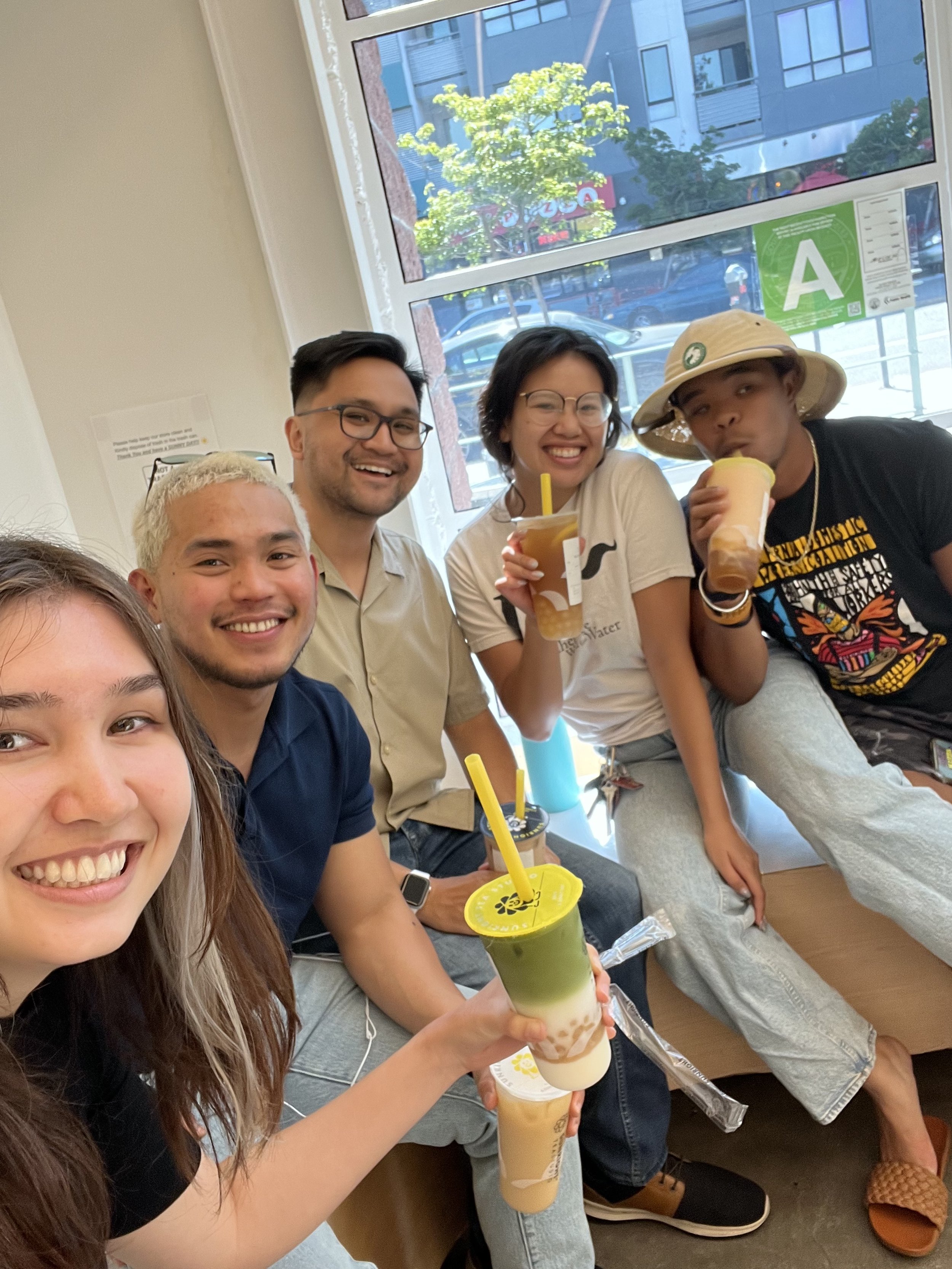I walked into the Pilipino Workers Center of Southern California (PWC) office keenly observing how other PWC workers were talking to me and to each other. I was trying to get a sense of the environment, to learn what behavior was expected of me and what to expect from my time there. I was struck by the building’s casual atmosphere as Daniel, a graduate student working in a different department, led me around. Daniel was the only PWC worker in the office at 9 am, when my shift started; he was a self-diagnosed early bird, and most workers, he said, didn’t come into the office until the afternoon, if at all. I would have the next few hours to work on “getting a feel of the office” while awaiting my supervisor’s arrival, occasionally asking Daniel questions about the organization. I appreciated his responses because they were often embedded with office gossip and career advice which further demystified my surroundings. When I asked him about the dress code, Daniel answered with an anecdote: reflecting on his time as an undergrad, he remembered how the Asian student organizations he participated in hosted events for smaller ethnic groups within the Asian community. Most groups, he said, planned elaborate galas, with guests dressed in culturally significant outfits or formalwear. Filipinos, however, were more often known to frequent the local bars and “act wholesome” (Daniel pointedly reminded me that this was sarcasm). He said that the Filipinos just had a different “vibe” than everyone else. As such, the dress code at PWC was smart-ish casual. Or casual.
I found it interesting that Daniel tied the operations of the office to the cultural identity of Filipinos — more specifically, that he thought of Filipinos as a group distinct from other Asian Americans. As more workers trickled into the building, I was greeted with hugs and wide smiles, which were only more enthusiastic once they learned I was also Filipino. The office felt more like a family function than a workplace to me, especially because many of them insisted I call them Tita and Tito, signifiers meaning “aunt” and “uncle.” Furthermore, it was my supervisor Ian’s birthday, and someone in the office had cooked pancit, fried rice, fried chicken, and other Filipino food to celebrate. After lunch, Ian and I discussed what my goals were with PWC and why I had been interested in CAUSE, which provoked a discussion of the role of race in our lives. I admitted that, as a mixed person, I had always felt conspicuously white during Filipino gatherings, and that I consequently view racial identity as something that changes with one’s environment. Ian agreed that, as an immigrant, he also felt that his positionality in different contexts such as location and local culture impacts his own racial identity; he may identify himself to others as Asian, Asian-American, Filipino, or other terms based on the situation he is in. He added that, despite my insecurities, my experiences were still a valuable fragment of the Filipino perspective. I found this conversation strangely reassuring.
Getting boba!! (from left: Olivia Sieve, Jocas, Ian, Shekinah, Sim)
Later on in the day, CAUSE alum and PWC employee Shekinah popped her head into the office and invited Ian and me to boba. As we piled into the car with other people from PWC, Ian revealed to the others that I didn’t understand Tagalog. Immediately, they erupted into a debate of which word to teach me first (most of the contenders were vulgarities). Ultimately, they decided (with much resistance from Shekinah) to teach me “tangina,” which is an aggressive swear word that insults both one’s target and their mother (I later recounted my first Tagalog word to my lolo — he gasped and asked me to repeat it before bursting into laughter). They also taught me “you are so tall” and other phrases to prepare me for conversations I would have over the next couple of days. As we sipped on boba and joked around, I felt a comfort I had not expected — a sense of familiarity I had never experienced in a work environment before.
This week helped me understand being Filipino as an identity outside the term “Asian American.” Coming from a predominantly white area with very few Filipinos, I never had an environment outside family events where I could build an identity off of my Filipino cultural heritage rather than the broad racial term of “Asian.” I had always felt some alienation from the phrase “Asian American,” and had decided this feeling was a fault of my upbringing or appearance, especially as a multiracial person. I was surprised and relieved to find that I related so much more to Filipinos outside my family than I did to Asian Americans of other backgrounds; now part of the isolation I had always felt from that term made more sense to me, and was echoed by others with the same heritage. This experience has taught me the value of investigating the diversity of cultures covered by the term “Asian and Pacific Islander American.” Though it unites our community in pursuing goals and gaining social and political leverage, it does not acknowledge the distinct values of individual Asian cultures.
The views and opinions expressed in this publication are those of the author and do not reflect the views or positions of CAUSE or the CAUSE network.
Written by Olivia Sieve, Leadership Academy 2023 Intern.
The CAUSE Leadership Academy (CLA) for students is a nine-week, paid, internship program that prepares college undergraduates to lead and advocate for the Asian Pacific Islander community on their campuses and beyond.


